Throughout the long and winding road of my harmonica journey there have been certain players who changed everything. Players who shook me to my core and made me rethink what was possible on this little instrument.
During my journey I’ve listened to almost every famous harmonica player… and yet time after time my endless quest of improvement brings me back to these five players. They are inexhaustible, unique, and fiercely authentic in terms of their musicianship, tone, and approach. From each of them I have gained a lifetime of knowledge and I am eternally grateful to them. If not for them I wouldn’t have stuck with harmonica and would have continued the rest of my life as a drummer.
In other words, I wouldn’t be where I am today without these players.
Every instrument has certain artists in their respective cannon (John Coltrane for Tenor Sax, Louis Armstrong for Trumpet, Jimi Hendrix for guitar) that you are obliged to know because everyone universally agrees they are the foundation of everything that came after them. For harmonica that means Little Walter. While I’m a huge fan of Little Walter and agree that he is the GOAT, he’s just not my favorite. That might be sacrilege or uncouth but its just how I feel.
I encourage you to find those players who make you inspired and excited to play your harmonica; to find those songs that speak to you and give new meanings the more times you hear them.
Of course, the list is lacking. Theres so much inspiration I’ve taken from many other players; especially my teachers. Over the years I’ve been lucky to study with some of the greatest players… and yet I still come back to these five individuals after endless hours listening and absorbing.
Without further ado, here are the players who made me who I am today.
William Clarke
We all have that one player that made us want to learn harmonica.
For some of us its Bob Dylan.
For others its Little Walter.
For me, that player was William Clarke.
I was fifteen and had been playing harmonica for a year. I was having zero luck on the thing; I couldn't get all those juicy bends and dirty warbles to come out and was stuck playing Old Susanna to the point my neighbors were going to try and have me evicted or killed.
I was convinced there was something wrong with my harmonica; there had to be… what am I doing wrong? How were these guys getting these bluesy sounds to come out of this thing?
About three months after that I was bending and began to explore the kings of the instrument; the Walters, Cotton, Sonny Boy. I was fascinated with the textures they were getting and how much dynamic range they could get out of the tiny thing.
One day I walked into my high school band room earlier than my peers and my teacher (an incredibly well researched musician) showed me a recording off an album called Tip of the Top.
“You got to hear this harmonica player; I think you will really dig him” he said.
I sat down and looked at the photo on the album; a huge burly man with a goatee and thick black sunglasses playing a gigantic harmonica (this was the first time I’d ever seen a photo of a chromatic harmonica). My teacher pressed play and I was floored by what I heard.
“Wait….. THIS is harmonica?????” I said with a look of utter shock on my face. I couldn’t believe it; the tempo with which this man was playing, the control of the bends, the amount of air he was expending! I’d heard Big Walter and Little Walter at that point but it didn’t grab me like this recording did.
I had no idea what I was hearing but I knew that I had to know… and that was the most important aspect at that point in my life. It lit a fire in me that one day I would have some idea what he was doing.
That moment catapulted me into a life long love affair with Clarke’s music. He’s a classic example of a player who is very difficult to understand as a beginner player but as time goes on he starts to make more sense. For the first few years of studying him it was all 100% over my head. I remember being so frustrated trying to learn Pawnshop Bound or Trying to Stretch my Money that I almost gave up on him. I would have never picked up Chromatic harmonica if not for Clarke, nor would I have ever taken the time to learn techniques and scales beyond just 3rd position.
I continue to return to his albums for inspiration and frustration. One of my favorite uses of time in the last few years has been doing intensive lessons with Ronnie Shellist where we broke down William Clarke songs bit by bit and each developed a renewed respect for this titan of harmonica.
William Clarke to me represents my beginnings on this instrument. Not only was he such a great frontman, songwriter, singer, and of course technically proficient player but he had a certain character about him that really inspired me when I was younger. I knew if there was ever a day when I didn’t want to pick up my harmonica I could flip on one of his records and immediately feel the fire in my belly to practice.
Paul Delay
When I was eighteen I moved into my first apartment. Grimy and located on what was then the most rat infested street in Downtown Boston, it was a hell of a place to experience life away from home for the first time. I can still taste the buffalo chicken pizza smothered with ranch dressing I used to get from the little bar across the street five nights a week; can still smell the rich smell of weed and dirty underwear that permeated the walls of my harmonica hovel on an everyday basis. My refrigerator at the time consisted of three necessities:
Beer, beer… and beer.
Everything a growing college boy needs. Or so I thought.
I can still hear the sounds of endless honking cars and noisy college kids in the apartments surrounding us. Sleeping at night was difficult due to the window in my bedroom being cracked letting in the piercing chill of wintery New England air; not that I slept much at that point in my life.
It was in this place that I made the decision to devote my life to the harmonica… and in large part that was due to one particular album.
Live at Nottoden by the Paul Delay Band.
From the very first notes of the first song I remember squinting my eyes and feeling a deep state of confusion; like someone had just played me a track made by some alien race or bygone era. It was blues… but the guy playing harmonica was unlike anything I had ever heard.
His phrasing was chaotic, majestic, and extremely nuanced to the point where, when I tried to play along with it, I was completely stumped as to how he was getting any of these licks. I remember sitting on my bed with my laptop open, D harp in one hand and beer in another, trying to figure out what the hell was going on. It seemed like the second I figured out one lick, the next one was even more complicated and dazzling.
I couldn’t stop thinking about this album. As the days went by I explored it further. Delay was doing so many things I never thought were possible; playing at crazy speeds with the same fluidity he would get on a slow blues. The album went with me everywhere; in my headphones at the gym, in my bedroom late at night when I was hopped up on a combination of Adderall and bourbon.
I couldn't escape this feeling; this unmistakable inspiration that Delay had instilled in me that had not been replicated since the first time I heard William Clarke.
I knew that I didn’t fully understand what I was hearing… and that’s what made it so enticing.
The way Delay played the chromatic was a revelation as well; having only heard William Clarke, Rod Piazza and George “Harmonica” Smith most of my life, what Delay was doing was unlike anything I had heard in blues harmonica before. Emphasis on single notes, major 3rds, and playing in keys that other blues players never dared to play in.
I had to know how he was getting those sounds.
Day after day I sat with this album, painstakingly trying to take apart every solo, every Delay “ism”, until after months of decoding I noticed how much my sound had changed. I began to notice improvement in my own playing which lead me to more gigs, which lead me to the job I have now. That album was in many ways what made me appreciate the discipline and skill it takes to be a real harmonica player. Prior to that album, I had a bit of a naive sense of what improvement actually meant.
If not for that album I would not be a harmonica player today. I would have continued as a drummer at Berklee and never had the courage to pursue harmonica as a career path.
To this day I still have so much trouble decoding Delay. Like Hamlet or the Poetry of Emily Dickinson, you could read them 1,000 times and you would still never fully grasp what the full spectrum of it is. You would still never uncover everything there is to uncover.
Delay is an endless mystery and I am eternally indebted to his music.
Stevie Wonder
Of course he’s on my list.
Not only is he a major influence in my life, in my music, and in my journey as a person but he’s also the harmonica player I find myself mimicking the most.
I’ve been a fan of Stevie Wonder for as long as I can remember. I remember being a little kid driving to school and hearing him on the radio; I remember seeing the vinyl of Songs in the Key of Life in my parents record collection. And of course, I remember the first time I heard him play harmonica.
It was, at that point in my life, the most beautiful sound I had ever heard; more tender than a saxophone or trumpet with the vocal stylings of the man himself. I couldnt believe what I was hearing; it wasn’t the same awe that I had for Little Walter or Sonny Boy; it was a distinct moment in time where I realized harmonica was not just something in old records- it was a living breathing evolving entity.
In 2018 I was offered a job performing in Times Square with Sting for New Years Eve. The song for the performance was Brand New Day, recorded by Sting with Stevie Wonder on harmonica in the year 2000. Sting told me a funny story about the recording of that song that night before we played the show: that Stevie had gotten it in one take.
No pressure right?
For the month leading up to that huge show I spent every day, many hours a day perfecting Stevie’s nuance on the chromatic. I spent days locked inside with my headphones and harmonica playing Brand New Day over and over again making sure I had it exactly note for note.
This was going to be the biggest gig of my life… and I wanted to be ready.
That show sent me into the stratosphere. It was the biggest crowd I’ve ever played for (30 million people) and two months later I was offered a job as Sting’s featured soloist on his MySongs Tour in Europe. In the last five years I have toured in 50 countries getting the unique opportunity to bring the harmonica to the world on the big stage.
Five years down the line I’ve played Brand New Day thousands of times to the point where I know it backward. However, I will never fully understand Stevie. My respect for him as a harmonica player is on the level of worship and I owe much of what I have today to his unique style. His approach to sound is so unique and infectious that every time I hear him I can’t help but grab my chromatic and try to figure out what he’s doing.
James Cotton
When I was in high school I was a part of a separate program called CAP (Creative Arts Diploma Program) where you take on a separate course of study for a certain amount of hours per week and graduate with a 2nd diploma. I chose to study Instrumental Music with a focus in drums and harmonica.
During my junior year I was assigned a “Special Artist” assignment; finding a musician who you wanted to deep dive on and give a presentation about; someone who really inspires you.
At this time I was deep into Chicago Blues, in particular the album Hard Again with James Cotton on harmonica. There was a certain intensity and ferocity that Cotton put into his playing; it wasn’t the swinging ability of Walter or the nuance of Sonny Boy but instead some tangible, badass attitude that, as a rebellious teen, really stood out to me.
I decided to study James Cotton and devoted the rest of my junior year of high school to listening to his records, learning about his history as a player, and actually had the great good fortune to see him live at a gig he was doing in Massachusetts before he passed away. I still vividly remember the old man walking out with a cane in his oversized pants and beret hat, sitting down, grabbing the vocal mic from its stand, and playing some of the purest, most badass tone I’d ever heard into it: no special amp or bull mic required: what you got was Cotton. The man could barely talk, barely walk; but my god could he blow that harmonica.
That moment was very impactful for me; sitting out in the audience with wide eyes as this harmonica player, as if by magic, had captivated the whole crowd with his command of the stage, his sound, and most importantly his attitude.
Even now it seems like I find a new James Cotton recording every day; he’s one of the best to ever do it and every time I hear him I’m reminded of why I love the blues so much.
Mickey Raphael
I first heard his name when I was getting into studying country music. I had been playing for a few years and was getting tiered of the blues. I wanted to expand my musical vocabulary and playing- logically, country made sense for a harmonica player.
I began listening to all the great country players (Donnie Brooks, Charlie McCoy, Todd Parrot) and was delighted to discover how different their style was compared to the blues I had been hearing all my life. I began to incorporate more major pentatonic stylings into my phrases; began to focus more on accompaniment playing (playing behind a vocalist) which ended up completely changing how I conducted myself as a musician.
It took learning country to understand one of the most elemental aspects of music:
It’s not about you. It’s about the song.
That lesson was not just necessary to learn but changed entirely how I was approaching my music.
As I explored more players I finally happened upon a video of Mickey playing behind Willie Nelson on the song “Georgia”. What astounded me about this song was how little Mickey played, but how much of a presence the harmonica had. Dynamics, tone, and especially musical knowledge were all on display on a level I hadn’t visually seen up till that point in my life.
Mickey continues to be a big inspiration to me to this day; I had the great good fortune to chat with him earlier this year about harmonica which was one of the coolest moments of my life. I still look to him for guidance and a model of harmonica professionalism on the big stage.







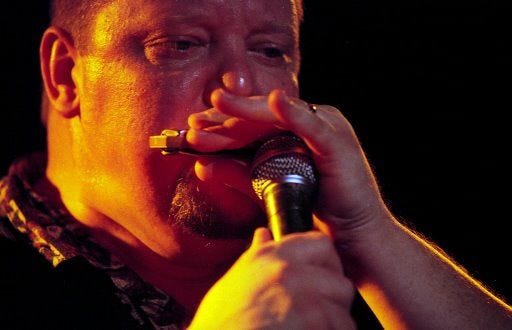

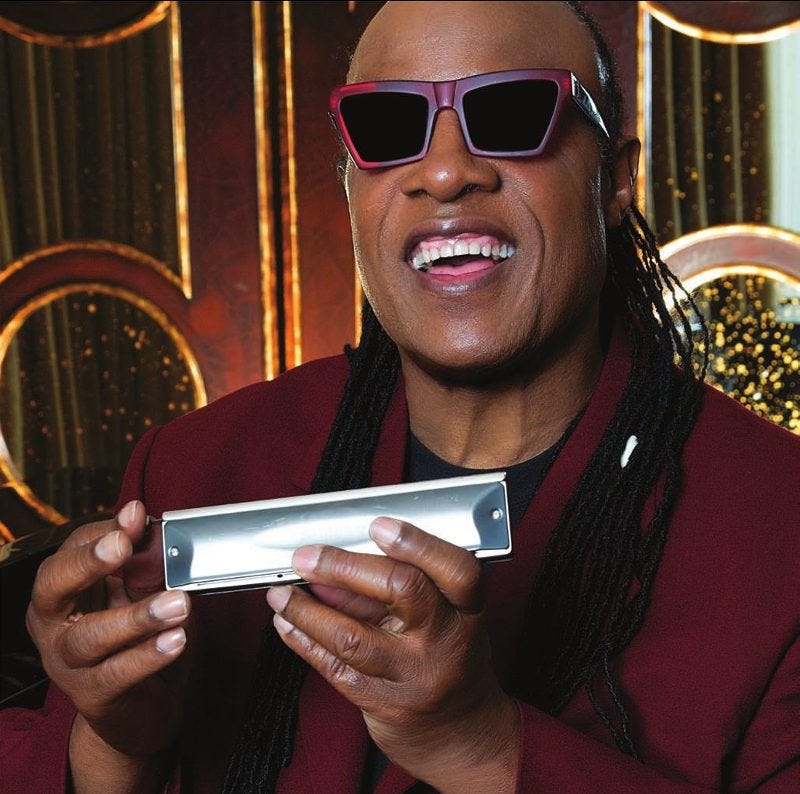
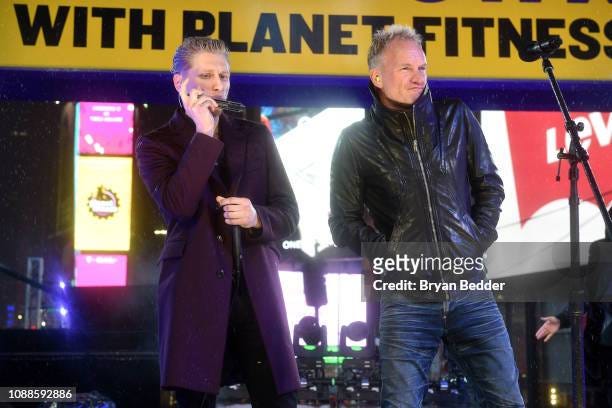
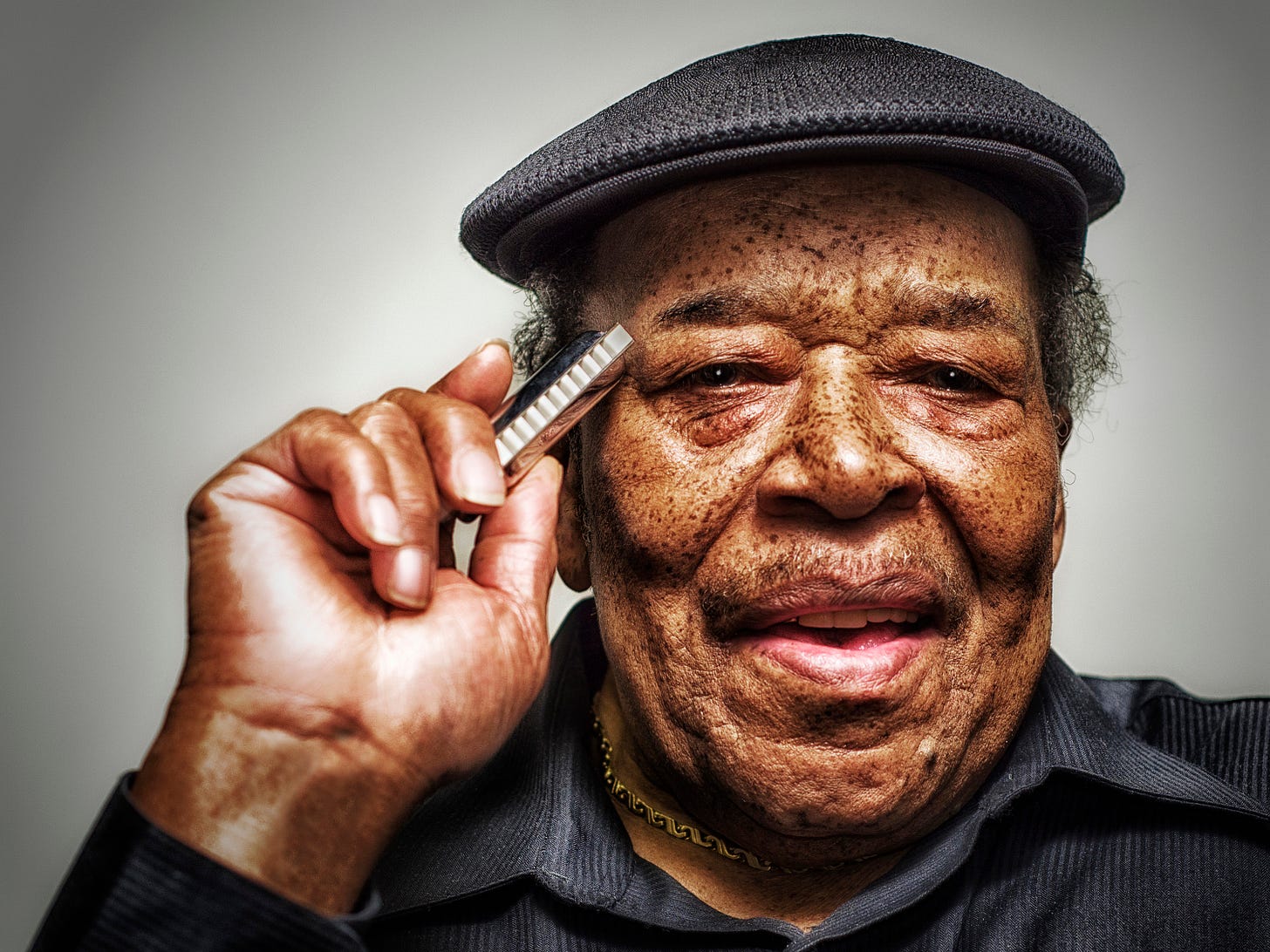
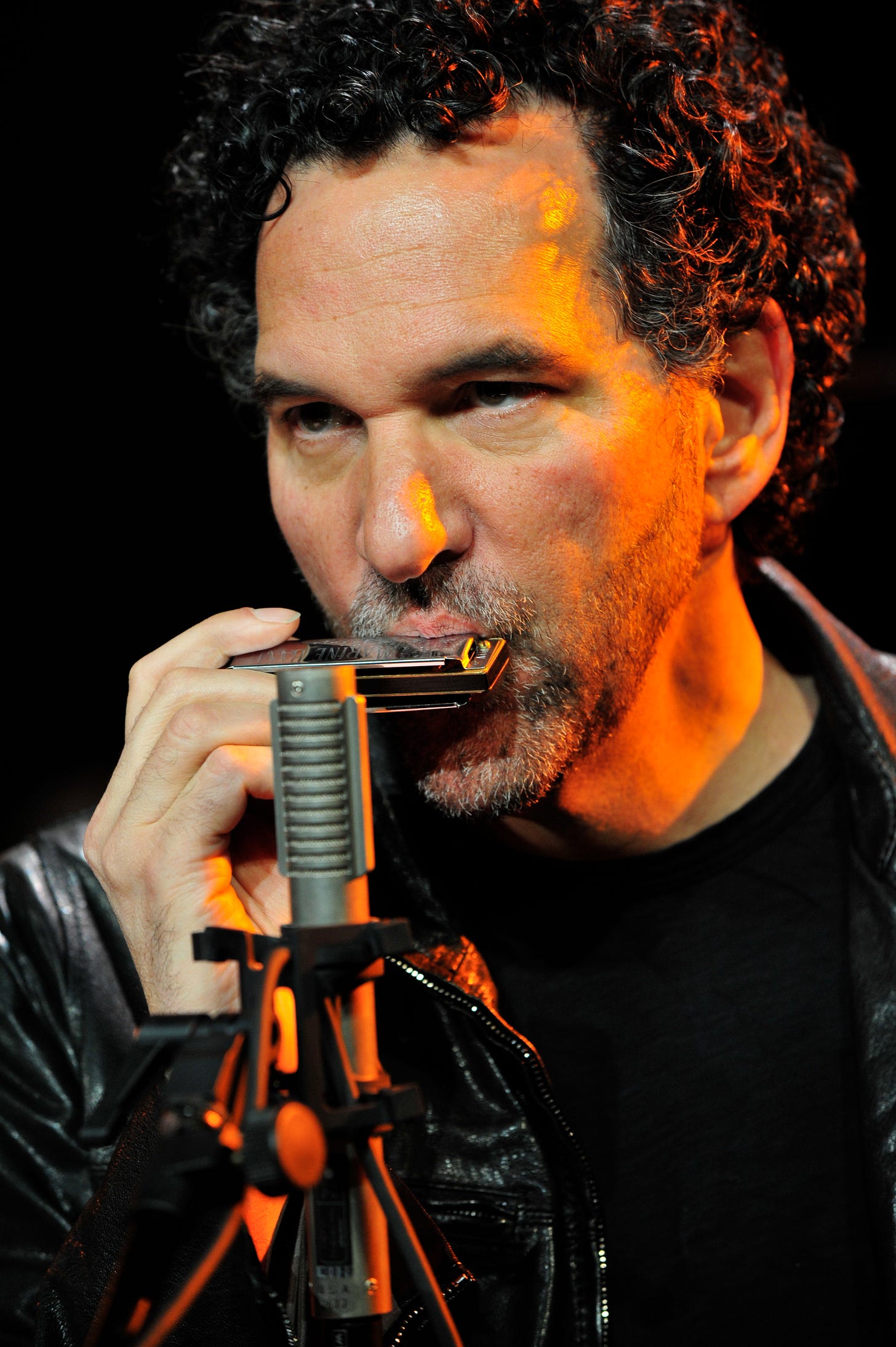
Couldn't agree more. Do you mind me asking Shane - did/do you play Brand New Day on a C-tuned chrom or one tuned to B? I've heard that Stevie Wonder may have played a B chrom on it on occasion (Sting seems to favour the key of B).